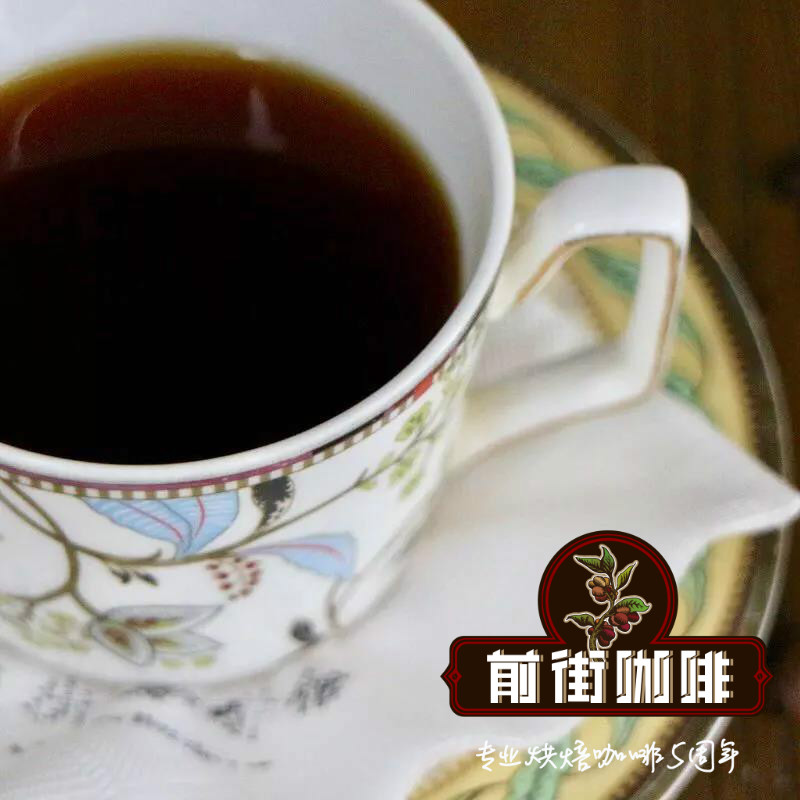Where does coffee grow in China? does Yunnan coffee taste good? Yunnan small-grain coffee flavor description.

Professional coffee knowledge exchange more coffee bean information please follow the coffee workshop (Wechat official account cafe_style)
Asia, the main producing area of coffee
The most planned people to cultivate and eat are Arabs, so there is a saying that the name coffee comes from the Arabic word "Qahwah", which means "plant drink".
A man in the Arabian Peninsula, the birthplace of Arabica coffee. In fact, in the early days, some Muslims would bring some coffee to their hometown after paying homage to Mecca. Through the spread of these Muslims, the habit of drinking coffee has also become popular in Turkey, Egypt and Syria. In fact, coffee was introduced into Europe through Venice and the port of Marseilles in the name of "Arabian wine". When the habit of drinking coffee became popular in Europe, Europeans began to try to grow coffee.
With the discovery of new air routes, Westerners established some colonies in South Asia and planted many cash crops in these places. The Netherlands was the first to plant coffee in Ceylon (present-day Sri Lanka) with a warm and rainy climate and Java in eastern Indonesia. As coffee trees flourish here, Java has become another synonym for coffee.
The soil and climate in many parts of southern China are very suitable for coffee growth, with an ideal environment for coffee growth. at present, the main producing area of coffee in China is Yunnan, which accounts for more than 80% of the national output, followed by Hainan. Guangdong, Guangxi, Fujian, Sichuan and so on also have a very small amount of cultivation.
Yunnan is located in the southwest of China, and the land in the subtropics is more than 400000 mu, of which the most suitable land area for small-grain coffee is about 250000 mu, accounting for 21% of the total land area of the province. Among them, Simao, Xishuangbanna, Baoshan, Lincang, Dejuji and other areas are about 600mur1200 meters above sea level, the annual average temperature is 18-20 degrees, the extreme minimum temperature is above zero, the annual precipitation exceeds 1000mm, and the soil pH is 66.5, which is very suitable for the growth of Arabica small-grain coffee beans. Hainan Island is located in the tropics, with a humid climate throughout the year, with a land area of 34000 square kilometers and a coastal plain, which is an ideal growing environment for coffee beans in Robusta.
With the coffee boom moving to the mainland, not only many cafes have appeared in first-tier cities, but Pu'er in Yunnan, which is located in the Tropic of Cancer, has also become the "hometown of coffee" on the mainland. Many foreign coffee merchants, such as Nestl é and Starbucks, will even buy coffee beans in Pu'er, and the local coffee beans are sold to more than 30 countries around the world.
The International Coffee Organization (ICO) points out that Chinese demand for coffee has grown by double digits every year over the past 20 years, and coffee has swept the tea country because it represents a Western-style life. In addition, coffee is especially popular with the urban middle class.
In China, the main coffee growing areas are mainly in Yunnan and Hainan. The coffee varieties grown in Yunnan are mainly Arabica, and they have called for the development of the coffee industry in the 1950s, but it is not based on the development of the domestic market of coffee. It is mainly supplied to the former Soviet Union, but the coffee farmers in Yunnan coffee growing areas themselves are unwilling to drink coffee, so Coffee culture in Yunnan has not formed its own characteristics, even at present, a large number of coffee grown in Yunnan accounts for a small proportion of local consumption in the growing area, which mainly depends on external sales.
Compared with Yunnan, another major coffee producing area in China is Hainan, where Robusta is the main coffee variety. Hainan coffee, especially Xinglong Coffee, is the most famous. Also in the early 1950s, the Xinglong overseas Chinese Farm, which was established, successively housed more than 10,000 returned overseas Chinese from 21 countries and regions, including Malaysia, Indonesia, Singapore, Thailand and Vietnam.
The vast number of returned overseas Chinese from Southeast Asian countries have a habit of drinking coffee in their original countries and regions, return to the motherland and come to Hainan to prosper to build a new China and build their own new homes in the harsh environment of wild and sparsely populated people. At that time, when rubber was mainly planted to enrich other cash crops, returned overseas Chinese began to grow Xinglong Coffee. In 1953, it was first introduced from the Fushan area of Hainan Island, while Fushan coffee was reportedly derived from the Robusta coffee variety introduced by Indonesian overseas Chinese Chen from Indonesia in 1935. Xinglong planted coffee, mainly Liu Yongxiang, an overseas Chinese from Indonesia. When he returned to China in 1954, Brought back about 10 kilograms of Robusta varieties of coffee seeds.
Important Notice :
前街咖啡 FrontStreet Coffee has moved to new addredd:
FrontStreet Coffee Address: 315,Donghua East Road,GuangZhou
Tel:020 38364473
- Prev

What is the best Blue Mountain Coffee? Introduction of Jamaica Blue Mountain Gold Cup Coffee Brand
Professional coffee knowledge exchange more coffee bean information please follow the coffee workshop (Wechat official account cafe_style) the world-famous Blue Mountain Coffee, produced in the Blue Mountains of Jamaica. The Blue Mountains are located in the eastern part of the island of Jamaica. The mountain has such a beautiful name because a British soldier came to the island of Jamaica and saw the peak shrouded in blue light.
- Next

Bourbon for batch washing treatment in the western province of Rwanda | Mushoi treatment site
Rwanda is a fast-growing boutique coffee producing country in East Africa, and the quality of its boutique coffee has improved rapidly. This batch of coffee beans, selected from Mushonyi Luter ridicule Rutsiro producing area, is located in the north of Nyamasheke, on the banks of Lake Kiev. The western province of Rwanda | Moncheha processing plant-Mushoi processing plant collaborative batch | what is the flavor of the bourbon species treated by the sun? Unique geography
Related
- Detailed explanation of Jadeite planting Land in Panamanian Jadeite Manor introduction to the grading system of Jadeite competitive bidding, Red bid, Green bid and Rose Summer
- Story of Coffee planting in Brenka region of Costa Rica Stonehenge Manor anaerobic heavy honey treatment of flavor mouth
- What's on the barrel of Blue Mountain Coffee beans?
- Can American coffee also pull flowers? How to use hot American style to pull out a good-looking pattern?
- Can you make a cold extract with coffee beans? What is the right proportion for cold-extracted coffee formula?
- Indonesian PWN Gold Mandrine Coffee Origin Features Flavor How to Chong? Mandolin coffee is American.
- A brief introduction to the flavor characteristics of Brazilian yellow bourbon coffee beans
- What is the effect of different water quality on the flavor of cold-extracted coffee? What kind of water is best for brewing coffee?
- Why do you think of Rose Summer whenever you mention Panamanian coffee?
- Introduction to the characteristics of authentic blue mountain coffee bean producing areas? What is the CIB Coffee Authority in Jamaica?

